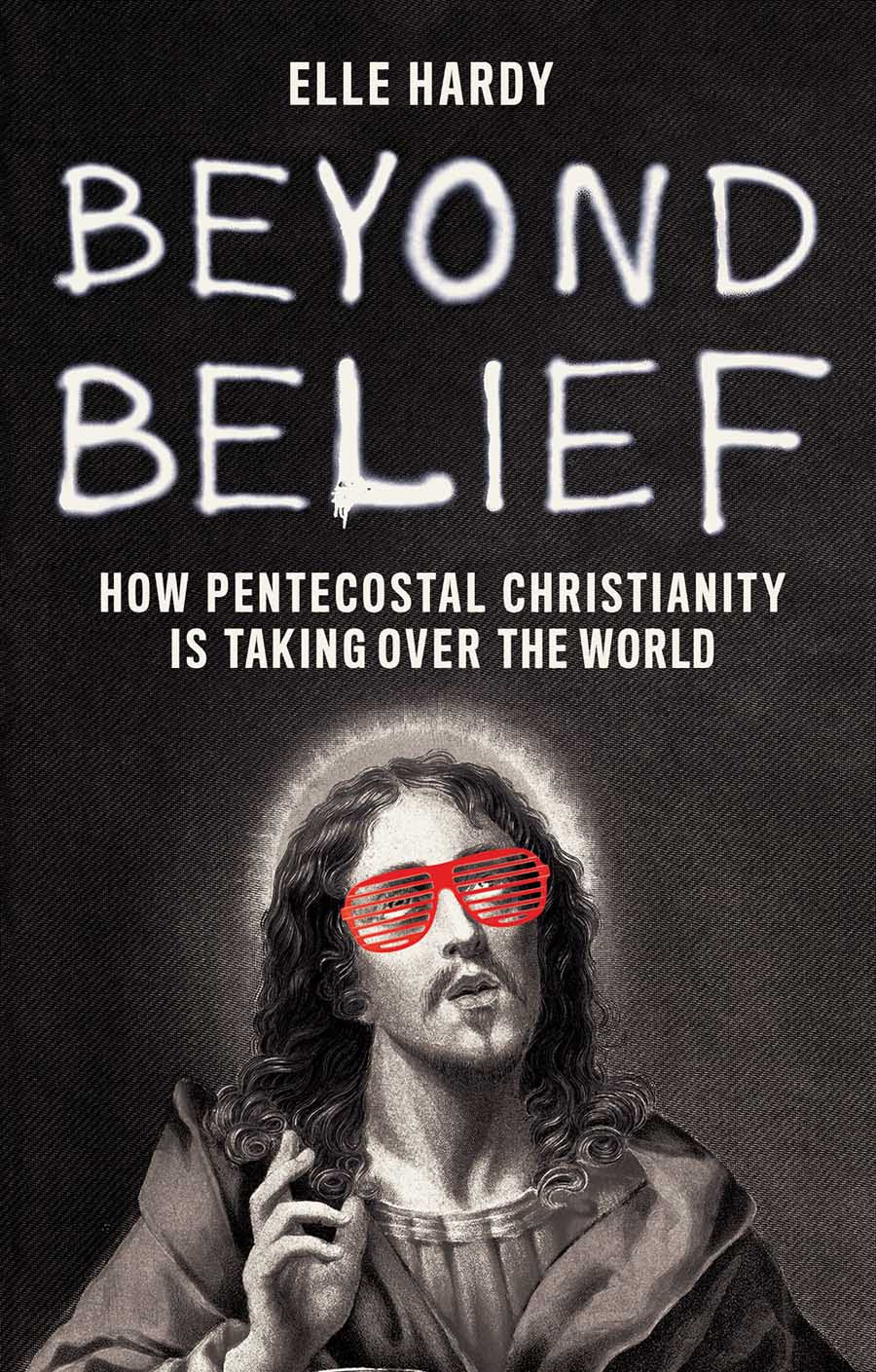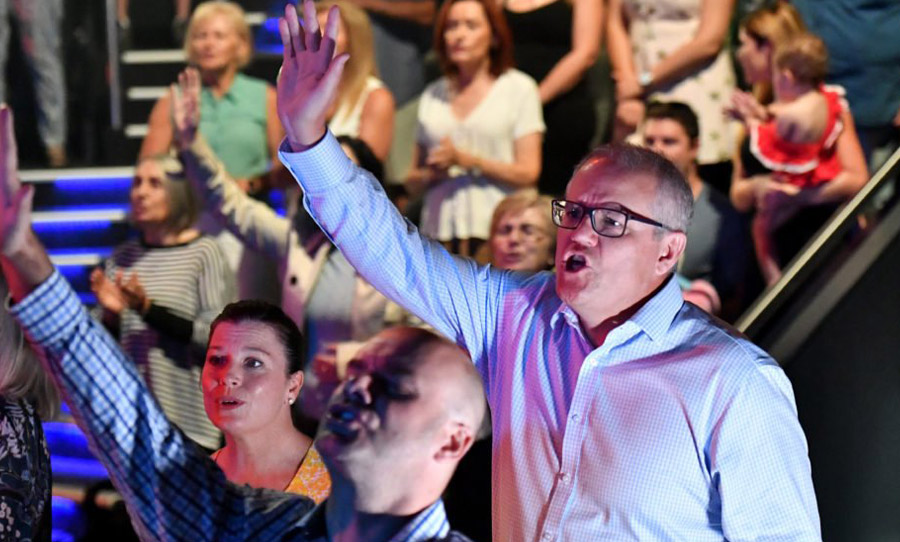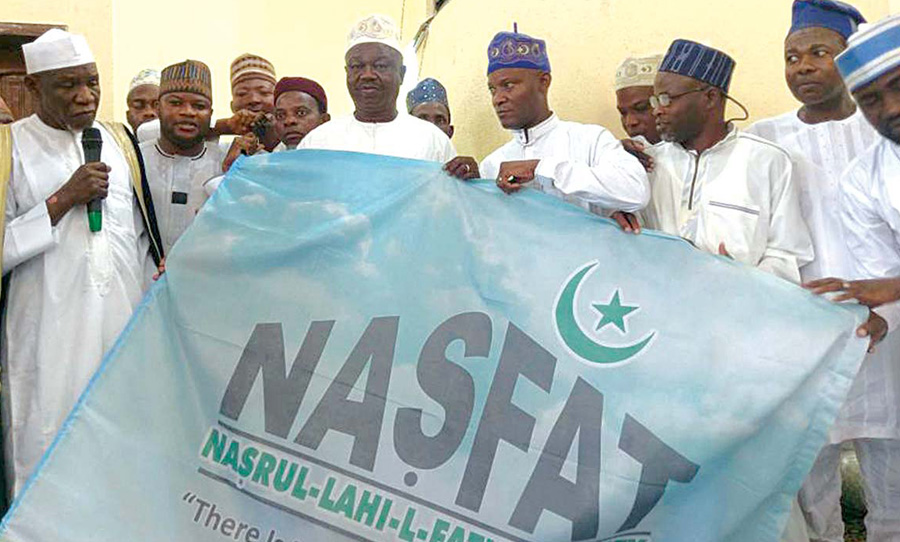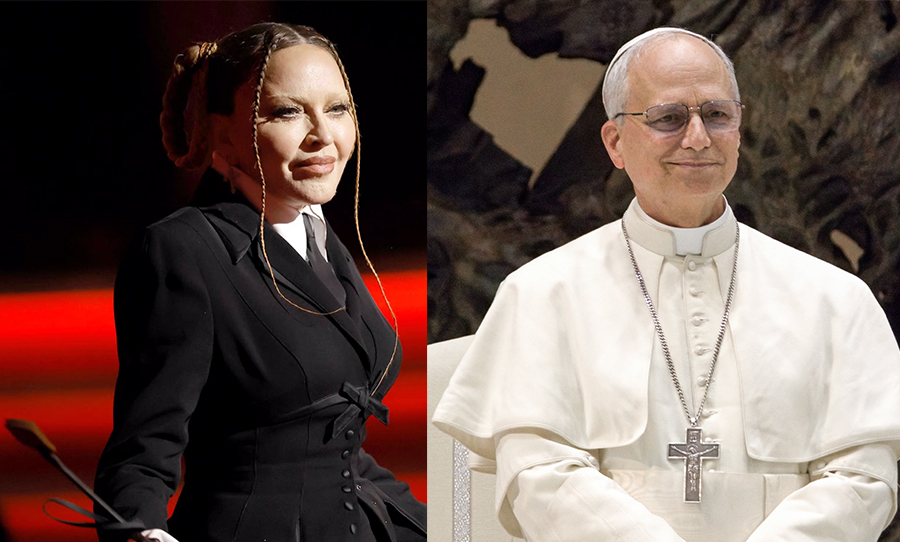In Beyond Belief, Elle Hardy takes readers on a tour of Pentecostalism: a relatively new brand of Christianity that’s had an outsized influence on culture and politics all over the globe.
The Pentecostal church was established in the United States, at approximately the turn of the 20th century. Still a relatively young country and reeling from the convulsions of the Civil War, the place was ripe to be influenced by the Holy Spirit. This is just an entrée to the tale of this denomination, laid out by the expert hand of Elle Hardy (whose credits include The Times, The Guardian, GQ, Vice, ABC, and more) in Beyond Belief: How Pentecostal Christianity Is Taking Over The World (Hurst Publishers).
As we know by now, the Pentecostal church is a widespread phenomenon, sprouting from the first ‘revivals’ (essentially mini-festivals where congregations were visited upon by the Holy Spirit and participants end up speaking in tongues), to now — a commercial juggernaut that combines capitalist principles with rarely matched religious zeal.
We spoke to Elle Hardy about its itinerant roots on the American frontier, Hillsong (of course), the horrors of ‘spiritual warfare’, and its influence on other kinds of Christianity, as well as other religions.

HAPPY: It’s impossible to divorce Pentecostalism from the idea of the New World. Could it have come from any other place than America?
ELLE: It came from an idea of religious freedom and there’s always been a marketplace in America. I was in the opioid capital of America: Huntington, West Virginia, a few years ago doing a story. I think I counted 21 churches there — and it’s a pretty small town. So yeah, the Pentecostal church began in uniquely American circumstances. But nowadays, it’s a much more global phenomenon. Belief in higher powers is a given in huge parts of the world, but in its early days, it was uniquely American.
HAPPY: It’s also a very performative display of faith. As you point out, it’s a nursery of rock ‘n’ roll. Its early pioneers earned their stripes at the pulpit, rather than following rigid hierarchical doctrines. Can you shed a bit of light on the three personalities that defined the early history of the movement?
ELLE: Firstly, there was Charles Fox Parham — an itinerant Methodist preacher from Kansas. At the time he was around [Parham was born in 1873 and died in 1929], there was a lot of movement, people were moving from town to town, everyone was hustling. There were new religious ideas coming in since the [American] Civil War. The sheer death toll of that event forced innovations. For example, there was a lack of young men to preach, so women started taking up these roles.
The idea of the Holy Spirit seemed to be moving around in America. There were a lot of revivals around the turn of the 20th century: in Wales, in Pyongyang, in some parts of Africa, as well as in America. Parham and his son were quite sick and healing became an increased focus. We still see that in so many places: when there’s no health care, faith healing is the only game in town.
He was a headstrong man who fell out with elders in his congregation, but he could speak at 250 words per minute to bring people along with him. He got a group of people together on New Year’s Day of 1901 and someone finally started speaking in tongues. They’d been praying and fasting to bring it on, and it came on a woman in the group called Agnes Ozman. They thought she was speaking Chinese, and then a few days later, it came on Parham, who thought he was speaking Swedish. From there, it really started popping off around Kansas, Missouri, Oklahoma, and Texas.
In 1906, a young Black man, who was the son of freed slaves from Louisiana, came to Parham’s school in Texas. That was William J. Seymour — who was credited with the founding of the movement. He’d lost an eye in a smallpox outbreak and had converted to a sort of Protestantism. He believed that he’d been called to the ministry by God — and didn’t take it. Therefore, he lost his eye as a warning.
Seymour started preaching with Parham — and despite their great differences — Parham recognised the talent in him. But Parham was a product of his time and fundamentally racist. For example, Seymour had to sit outside in the hall while all the white people learned from Parham on the inside of the classroom because of the Jim Crow laws in the South.
Eventually, Seymour went to Los Angeles to start his own congregation. A revival took place, and after days of praying and fasting and all-night vigils, they were speaking in tongues. So many people turned up that they were falling through the floor. They ended up renting an old church and Seymour’s congregation grew in popularity.
I think a big part of why he’s credited with the founding of the movement was because it happened in Los Angeles. It was a big city and the media was fascinated, with newspapers printing lurid accounts of what was happening. More and more people kept coming to see it.
At that time, Pentecostals were also very pre-millennial: they thought something big was going to happen. At the same time that the Holy Spirit descended on Seymour’s congregation, the San Francisco earthquake happened. This event really focused the minds of the people who believed.
The reason I picked Aimee Semple McPherson as the third was because she was a proto-televangelist. She also realised that she need to sanitise it a bit. People who were trembling and falling to the floor were taken to the tents outside. She made it more commercially viable and focused on entertainment. And as is the tradition for any televangelist, she had a pretty spectacular fall from grace. She didn’t practice what she preached. They were all fascinating and deeply flawed in their own ways. And because it’s such a modern denomination, we’re lucky to have these accounts.

HAPPY: They all rubbed the figures of the establishment the wrong way, were ridiculed by the media, but still appealed to ordinary people. Do you think that the parallel phenomenon of political populism is coincidental here?
ELLE: Yes, very much so. Trump, obviously. But we’ve also seen Pentecostals become very big backers of Rodrigo Duterte in The Philippines and Jair Bolsonaro in Brazil, even Viktor Orbán in Hungary. 29% of Evangelical Christians thought Trump was anointed by God to be president, but 53% of Pentecostals did. So that just shows you the fervour of the belief and the support that Trump had from the movement. All these guys are entertaining. They’re not your Tony Blair types who spout clever lines and walk both sides of the street. Duterte called the Pope a “son of a bitch”. They represent the end of that West Wing era of politics where you say all the right things without doing much.
Pentecostalism has always been good at speaking to the here and now. God cares about what’s in your wallet at the end of the week. These are the kinds of things that populist politicians seem to be good at speaking about. Even though I would argue that it’s all bullshit and they never do anything anyway.
Plus, you can’t underestimate the entertainment factor. You watch a Trump rally and it’s entertaining. You watch Joe Biden and you think “what’s Grandpa on about?” A Trump rally is funny and stupid and goes off on tangents. Pentecostal churches are similarly entertaining. There’s no Reverend Lovejoy there. You plug in your electric guitar and get going!
Another link between populist politics and Pentecostalism is the feeling of being besieged by the secular world all around you. The liberal, post-‘End of History’ and post-Soviet Union worldview is being seen as flawed by a lot of people. Pentecostals really reject that and the populist politicians are really speaking to that feeling.

HAPPY: In our own neighbourhood, the big player is Hillsong. But in a country whose post-colonial history has been defined by imported Protestant versus Catholic sectarianism, how did this form of Pentecostalism take root and flourish?
ELLE: Pentecostalism went a bit dormant after Aimee Semple McPherson, but after World War II, it was rejuvenated — certainly in America and probably in Australia too. A lot of people thought that World War II might’ve been the end of the world — but if you got through it — the narrative was that good had triumphed over evil. There was a new emphasis on the here and now and a new urgency that Pentecostalism picked up on. Australia had some tent revivals around that time. It was quite a rural phenomenon in Australia and there were revivals in Aboriginal communities.
Hillsong picked up on a lot of stuff coming out of California in the second wave of Pentecostalism and they’ve almost transformed the movement with its music. 50 million people are listening to Hillsong music each week. So many people of faith just know Hillsong as the band. They’re in 30 countries around the globe in major cities like Moscow, Cape Town, and Sao Paulo, and have inspired so many other churches to do their own similar thing.
But the real mark of it is how it’s transforming other denominations. Protestant churches are listening to it, Catholic churches are listening to it. Other churches are having to play Hillsong music to hold on to their congregants. They’re like The Velvet Underground of devotional music, but way more popular.
⛪️INTRODUCING THRILLSONG ⛪️
We’re ready to play your next religious or sporting event in NSW. feat –@whatsonot@jack_river@thejunglegiants@syccoworld@confidenceman_@dunerats@limecordiale@illy@thandiphoenix@alex.the.astronaut
@anniehamiltn@hihatchie@klpmusic
AND MORE pic.twitter.com/9JH9LcL5SJ— peking duk (@pekingduk) January 13, 2022
HAPPY: “Prosperity theology” is a phrase that recurs in your writing and this idea cuts across Christianity and Islam in Nigeria, where going to the mosque and the church is no big deal really. Can you tell me a bit about that?
ELLE: In Lagos, the biggest city in Nigeria, most of the people there are Yoruba. They’ve traditionally been a blend of Christians and Muslims and have lived cheek-by-jowl. Eventually, a group of businessmen and well-educated Muslims wanted to create a ‘Mega Mosque’ to do things a bit more like the Pentecostals. They ended up establishing NASFAT.
The Nigerian Yoruba form of Islam is definitely not like Boko Haram. They were used to doing things in quite a traditional way, but they were also feeling the pinch from competitors. NASFAT chose to establish themselves on the highway where all the ‘Mega Churches’ to show that they could compete.
In Lagos, it’s not uncommon to go to the mosque on a Friday and the church on Sunday to keep both your Grandmas happy. But then the people running the mosques started noticing that young people would still go to church on Sunday and not to the mosque on Friday. The Pentecostals services were full of prosperity gospel and therefore gave people a lot of hope. A traditional Muslim service is more austere, whereas the Pentecostals were saying, “you’re gonna be rich!” So the mosques started taking on a few of these lessons, which was fascinating to see.

HAPPY: “Doing the Christianity”, and engaging in “spiritual warfare” — rather than simply being Christian — has manifested in real-world physical attacks. What are the dangers of being perceived to be standing in the way of the movement?
ELLE: I focused this chapter on Guatemala where there’s been a spate of murders of traditional healers, medicine men, Indigenous priests. The killing I focused on was that of Domingo Choc Ché, who was set on fire in front of the whole village.
One thing that Pentecostalism has understood exceptionally well is that it is in a marketplace of religious ideas. It’s a neo-liberal view of the world. Faith healing, and health and wealth, has always been important. So when it comes into contact with traditional Indigenous medicine, it’s viewed as a competition.
There’s also a sense of righteousness and war-footing that is common among the Pentecostals who are into spiritual warfare. These guys are true believers. For all the light and fluffy stuff about prosperity theology, they believe they are foot-soldiers in this cosmic battle and they think that a lot of traditional beliefs are fundamentally wrong. And not only wrong, but evil, and brought on by the Devil and Satanic spirits. We’ve seen that cross over with QAnon and the concept ‘conspirituality’.
When people believe in demonic forces, it descends into violence pretty quickly. Guatemala was the dirtiest of the Central American ‘Dirty Wars’ and so much of the violence was perpetrated on Indigenous people then. And now, a lot of Indigenous people who are being Pentecostalised are turning on their own traditions. Choc Ché’s murder was carried out by a group of Indigenous Mayans who had themselves converted.
HAPPY: The political voice of the movement is loud, but it has also been dogged by scandal in many places that it takes root. There’s also a strong individualist streak — churches like Bethel [in America] and Hillsong have even disavowed the Pentecostal label. Beyond that, the movement seems to be made up of a jumble of paradoxes — “a religious practice that fits into modern lifestyles, indulging in feel-good concerts and social media’s dopamine surges, but also speaks to the outlook of extreme right-wing nativists and Christian fundamentalists…” as you write. Therefore, it’s hard to get a reading on the future of the movement as a collective force. Did you come away with a sense of its future direction?
ELLE: It’s difficult to say. We know that it can’t grow forever. There’s such great power in the ‘born again’ narrative. People who are converted see the demarcation in their lives: the before and after. 35,000 people a day are converting, but when we get more generations that are born into the denomination and the conversion rate slows, will the faith be as powerful without the ‘born again’ narrative? Also, when it becomes more mainstream and more part of the establishment, will that slow things down? Or its association with political power — for example, Jair Bolsonaro is incredibly unpopular in Brazil — will that end up tarnishing its reputation?
A lot of Pentecostal leaders, preachers, prophets, and apostles, would be reading a biography of Elon Musk before an address from the Vatican Council. They’ve really taken on ideas about disruption, so they have the power to keep transforming. I’m not a prophet myself, but I think the growth is going to continue for a while for sure.
Beyond Belief: How Pentecostal Christianity Is Taking Over The World is out now via Hurst Publishers and distributed by NewSouth Books.



